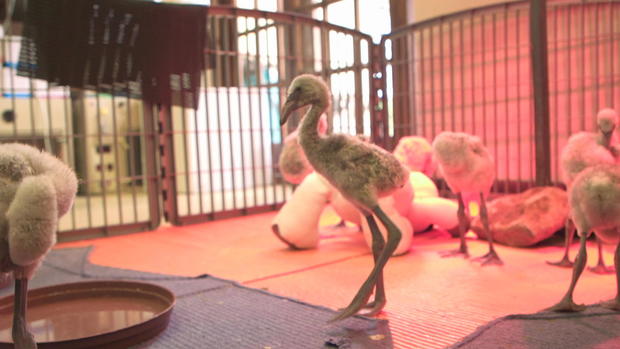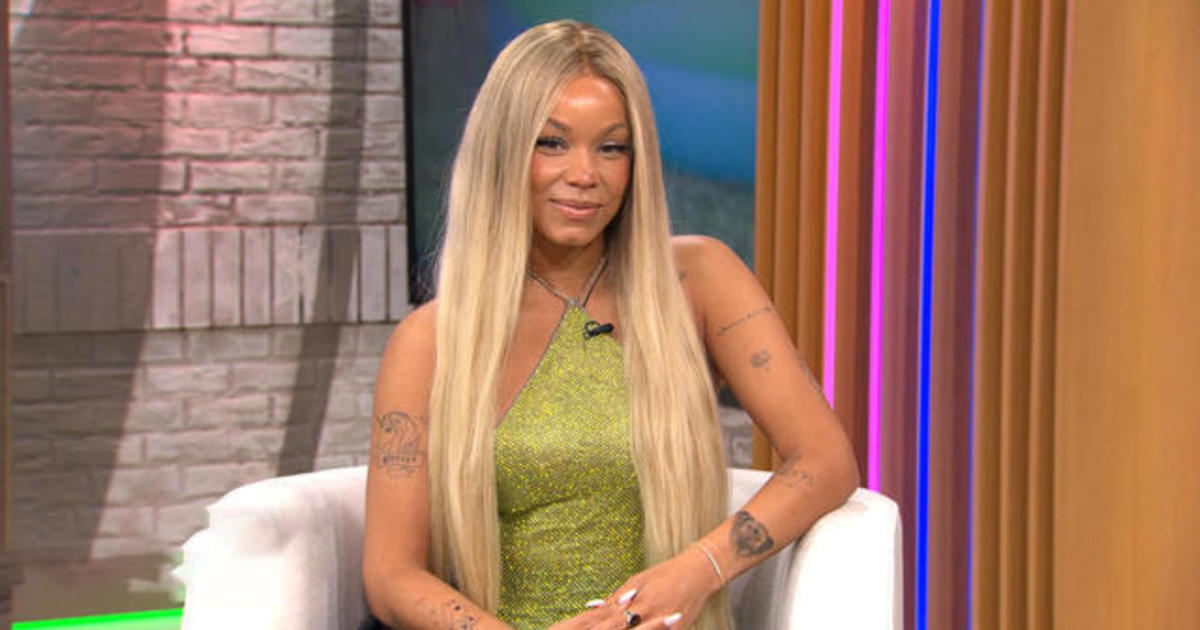Severe drought forces unprecedented mission to save hundreds of South Africa's baby flamingos
Severe drought has cost South Africa an estimated half a billion dollars and forced an unprecedented rescue mission of baby flamingos after thousands were forced to abandon their eggs and newborn chicks earlier this year because lack of water.
About 2,000 flamingo chicks were rescued, but that was only the first step. They then had to be cared for and fed by hand for several months before they could be released into the wild. Without that human intervention they'd have no hope of one day growing into the iconic pink birds.
Sprina Liu, the bird curator at Dallas Zoo, was flown in as part of a team of U.S. bird experts to assist with one of the largest rescue operations of its kind.
"A lot of them cannot feed themselves, especially when they were brought in. There were some eggs that were brought in as well, so we hatched them out and started hand rearing them," Liu told CBS News' Debora Patta.
Normally home to 20,000 flamingos, the Kamfers Dam waters had completely dried up after extended periods of the worst drought on record across South Africa. Unable to feed their newborn chicks, their parents left them to perish in the elements in order to save themselves.
Eggs were abandoned and three- to four-day-old chicks were left behind severely dehydrated and struggling to survive. Rescuers scoured the area, saving as many baby flamingos as they could. Then they watched as the tiny birds wriggled out of their eggs – some so weak that they had to be helped. Hand-rearing them was a delicate science. They had to be careful not to let them get too attached.
"We try our best to not coddle them too much. So we feed them, leave them with their friends, so they can learn to be flamingos," Liu said.
But clearly being a flamingo is hard-wired into their DNA. They soon adopt their unmistakable posture during their awkward teenage phase with their dull grey feathers, self-absorbed squawking and constant demand for attention.
Flamingos are not born with pink feathers; they turn color because of the algae and shrimp they eat in their natural habitat. So the teams have to replicate it in the food they provide. A few months later it's their coming-out party – some of the birds are finally ready to be released back into the wild. One flamingo was so ill she was named "Zero" because they didn't think she'd make it.
It's hard for veterinarians like Donovan Smith to watch them go out on their own – the temptation is still there to protectively rush in and help.
"She's my baby, although she hates us, because of all the treatment she got, and all the injections," she said. "I am sad …. happy she is being released."
But as every parent knows, you've failed if your child doesn't want to leave home when they're all grown up. Eventually, you have to let go.
Just under half of the baby birds that were rescued have made it, and already over 500 have been released into the wild. They've been fitted with trackers, and one bird has been traced as far as neighboring Namibia, a country over 600 miles away from the dam.




